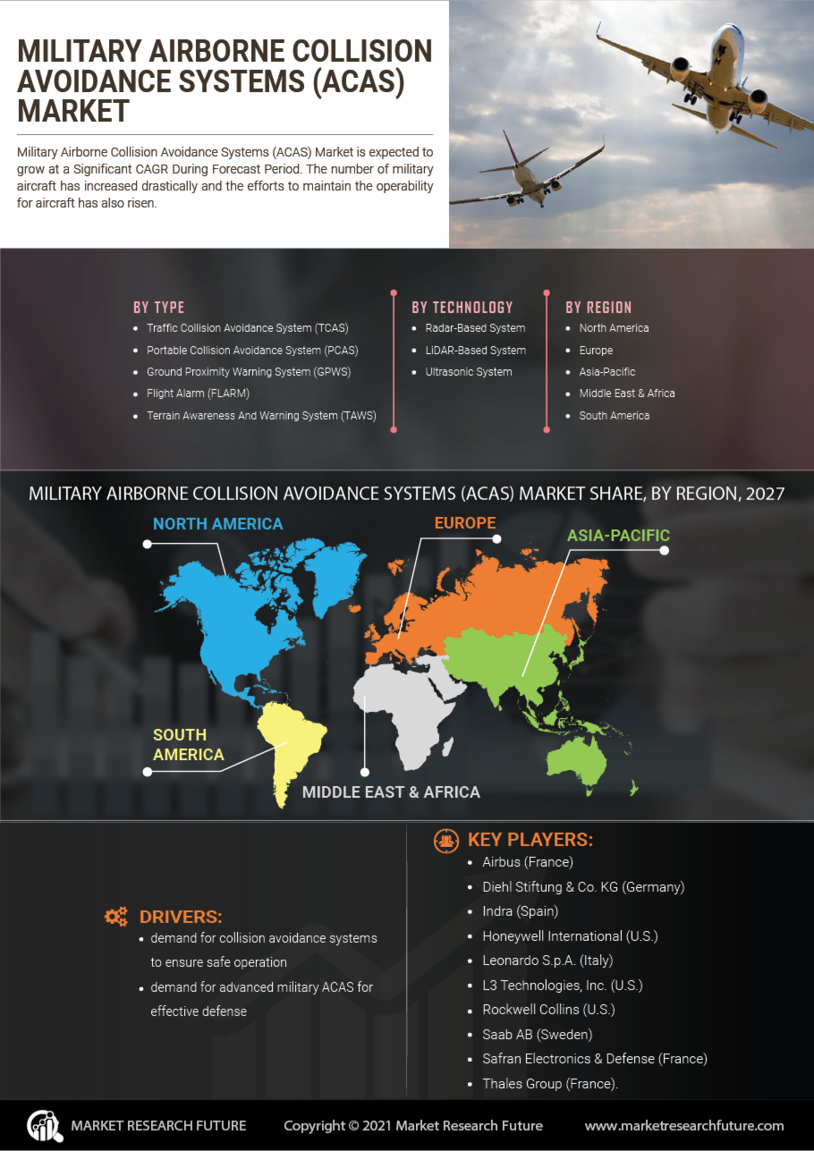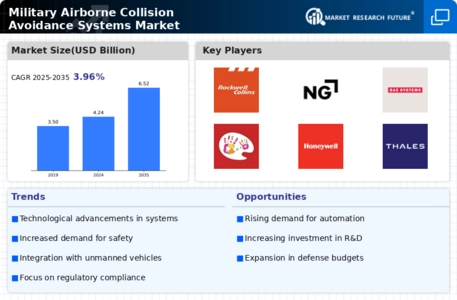Increased Military Spending
Rising military budgets across various nations are contributing to the growth of the Military Airborne Collision Avoidance Systems Market. Governments are prioritizing the enhancement of their defense capabilities, which includes investing in advanced collision avoidance technologies. For instance, recent reports indicate that military spending has increased by approximately 3% annually in several regions, reflecting a commitment to modernizing air force fleets. This trend is expected to continue, as nations seek to improve operational safety and effectiveness. Consequently, the Military Airborne Collision Avoidance Systems Market stands to benefit from this increased financial commitment, leading to more robust development and deployment of these critical systems.
Growing Focus on Safety and Risk Mitigation
The Military Airborne Collision Avoidance Systems Market is significantly influenced by the growing emphasis on safety and risk mitigation in military operations. As airspace becomes more congested and complex, the potential for mid-air collisions increases, prompting military organizations to adopt advanced collision avoidance systems. This focus on safety is reflected in the increasing number of training programs and simulations designed to enhance pilot awareness and system effectiveness. Furthermore, the integration of these systems is becoming a standard requirement in military aircraft procurement processes, indicating a shift towards prioritizing safety in operational planning. This trend is likely to drive demand within the Military Airborne Collision Avoidance Systems Market.
Technological Advancements in Sensor Systems
The Military Airborne Collision Avoidance Systems Market is experiencing a surge in technological advancements, particularly in sensor systems. Enhanced radar, LiDAR, and infrared technologies are being integrated into collision avoidance systems, improving detection capabilities and response times. These advancements are crucial for ensuring the safety of military aircraft, especially in complex operational environments. The market is projected to grow significantly, with estimates suggesting a compound annual growth rate of over 5% in the coming years. As military operations become increasingly sophisticated, the demand for advanced sensor technologies is likely to rise, driving innovation and investment in the Military Airborne Collision Avoidance Systems Market.
International Collaboration and Joint Exercises
International collaboration among military forces is fostering advancements in the Military Airborne Collision Avoidance Systems Market. Joint exercises and training programs are increasingly incorporating advanced collision avoidance technologies, allowing for the sharing of best practices and innovations. Such collaborations not only enhance interoperability among allied forces but also drive the development of standardized systems that can be utilized across different military platforms. As nations work together to address common threats, the demand for effective collision avoidance systems is likely to grow, further propelling the Military Airborne Collision Avoidance Systems Market. This collaborative approach may lead to the emergence of new technologies and solutions tailored to meet the unique challenges faced by military aviation.
Regulatory Frameworks and Compliance Requirements
The establishment of stringent regulatory frameworks and compliance requirements is shaping the Military Airborne Collision Avoidance Systems Market. Governments and military organizations are increasingly recognizing the importance of standardized safety protocols to prevent mid-air collisions. These regulations often mandate the integration of advanced collision avoidance systems in new military aircraft, thereby driving market growth. Compliance with these regulations not only enhances safety but also ensures that military operations adhere to international standards. As regulatory bodies continue to evolve their guidelines, the Military Airborne Collision Avoidance Systems Market is likely to see increased investment in research and development to meet these compliance demands.


















Leave a Comment